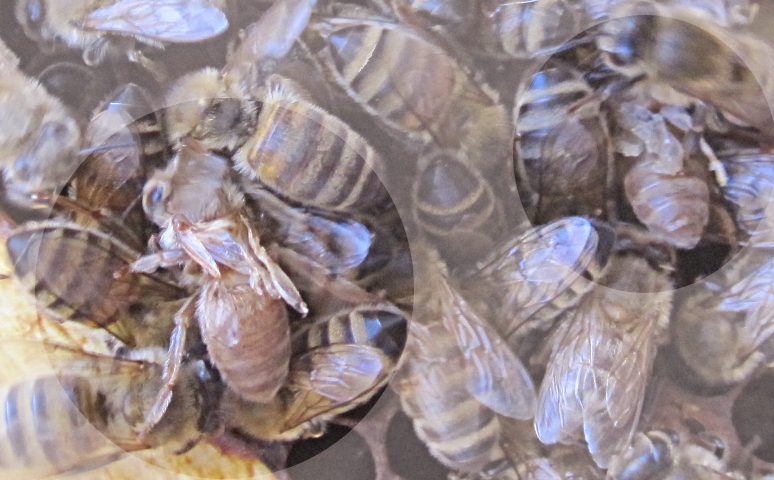One of the bloggers I admire most is Linda Tilman of Linda’s Bees – not so much because she is a Master Bee Keeper – which she is – but because she is self-confident enough to share her own failures as well as her successes on her blog pages. That is what makes her blog so damn useful and informative and fun.
So in that spirit, I am going to swallow hard and confess the errors of my beekeeping ways for 2011. I hope that you (and I) learn from my mistakes. Here we go.
1. I forgot about the bees for almost a month after harvesting 10+ gallons of honey. It was the end of the summer and not much was going on…I thought. In those four weeks, the larvae of wax moth pretty much devastated my #3 hive. It really made me feel sick to see those frames covered in webs and feces. Most of the hive absconded. If I had checked on the hive sooner, I could have removed enough frames and fat larvae to prevent absconding.
2. I did a lousy job of record keeping. I didn’t record where I got replacement queens for various hives. And I only had 3 hives but – by the end of the year – I could not reliably remember what I had done to each one. This is important because colonies are like children: they are all different and you cannot treat each one the same. I stopped weighing hives at the end of the year. Ok, I know that most beekeepers do not weight their hives but they don’t know how valuable my pry scale is as an indicator of health. If you look at what I did record (click here to see a timeline of the three hive weights), you will see that hive #3 was trying to tell me something at the end of July (“we’re outta here”). We were able to save the remaining colony by introducing a new Russian queen and putting them in a nuc for the Winter. They are now our healthiest colony.
3. I was lulled into complacency by our most vibrant hive. This hive produced the most honey and had the largest population of bees with 2 deeps full of brood. I figured that it could take care of itself. I didn’t suspect a problem until I started seeing black, greasy-looking hairless bees and bees with shriveled wings. Chronic Bee Paralysis Virus and Deformed Wing Virus probably resulted from a too high Varroa mite infestation. The mites bite the bees and so act as a vector for viruses. We applied HopGuard in September but I believe it was too little too late. The numbers of bees crashed to the point where the once vibrant hive was a deadout by January. There must be 80 pounds of honey left in that empty hive.
There were other sins of course. I could have done more to reduce Small Hive Beetle. I probably dropped or rolled one or two queens. Hive #2 had egg laying workers twice in 2011 alone. The bees got dumped out 100 yards away twice and survived (Click here to read and view)! In spite of that the hive produced honey! But these mistakes are listed under the “Shit Happens” category.
Sins #1 to #3 are avoidable. But I do have a plan for improvement this year. No, I am not going to promise to become more diligent. At my age, that would be self delusional and in denial of human nature. What needs to be done is that weights and bee counts need to be compiled automatically and mailed to me as attractive graphic charts. The hives – or small computers in the hives – need to remind me to tend to them and indicate if anything is out of nominal range. I hope I can report progress on this front by this time next year.
So in summary: Wax Moth, Small Hive Beetle, Varroa, Chronic Paralysis Virus, Deformed Wing Virus, egg-laying workers (twice), absconding, dead-out, and 10 gallons of honey. All in all, 2011 delivered a pretty good education and honey to boot. We are planning five hives this year. You can call beekeepers a lot of things but you can’t call them pessimists.
So whats your bad? I know there must be other sinners out there. Step up brothers and sisters and share your story with us.

Leave a Reply